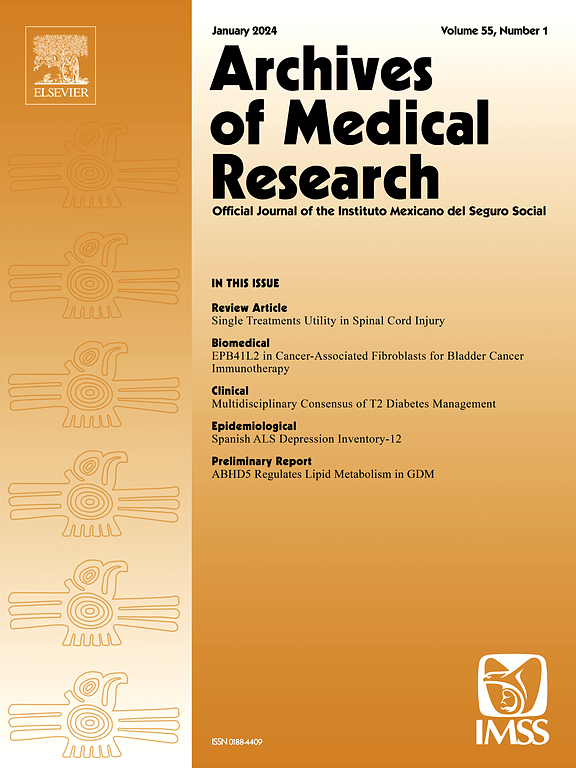Clinical and Laboratorial Evaluation of Male Infertility. A Detailed Practical Approach
IF 4.7
3区 医学
Q1 MEDICINE, RESEARCH & EXPERIMENTAL
引用次数: 0
Abstract
Infertility, defined as the inability to achieve pregnancy after one year of unprotected, frequent sexual intercourse, is a global burden that affects approximately 15% of couples, or 190–230 million people worldwide, who are trying to start a family. The male contributes significantly, directly accounting for 30–35% and up to 52% of total couple infertility, affecting approximately 7–8% of all men. This work aims to present, in a didactic and objective way, a standardization of the initial steps toward a thorough evaluation of subfertile and infertile men. We have focused on the evaluation of initial management, emphasizing the need for a comprehensive evaluation that includes a detailed history, physical examination, and semen analysis as the golden triple helix of basic evaluation of the infertile male. General and genital physical examinations are highly valuable due to the wealth of information they provide, from potential diagnoses to pregnancy prognoses. Comprehensive and quality-controlled semen analysis provides reliable information as a baseline test to evaluate the patency of the reproductive tract and to evaluate basic sperm parameters and fertility potential. However, it is not a fertility determinant and should preferentially be complemented with sperm functional tests. like biomarkers of oxidative stress, sperm immaturity and DNA fragmentation. Most cases of infertility require evaluation by a specialist in andrology, nonetheless the understanding and rationale of the initial assessment of the infertile male can be undertaken by non-specialists, thus improving the care and counseling of couples facing this troubling issue and avoiding unnecessary use of assisted reproductive technologies (ART) since most cases of male infertility can be treated and reversed by medical or surgical interventions, and the fertility status can be restored. The ultimate goal is to achieve natural pregnancy, the use of ART should not be the initial offered resource.
男性不育症的临床和实验室评价。详细实用的方法。
不孕症的定义是在无保护的频繁性交一年后仍无法怀孕,它是一种全球性负担,影响着全世界约15%的夫妇,即1.9亿至2.3亿试图组建家庭的人。男性的贡献很大,直接占夫妇不育总数的30-35%和高达52%,影响了大约7-8%的男性。这项工作的目的是提出,在一个说教和客观的方式,标准化的初步步骤,以全面评估不孕不育的男子。我们着重于初期治疗的评估,强调需要一个全面的评估,包括详细的病史,体格检查,精液分析作为基本评估不育男性的黄金三重螺旋。全身和生殖器体检非常有价值,因为它们提供了从潜在诊断到妊娠预后的丰富信息。全面和质量控制的精液分析提供了可靠的信息,作为评估生殖道通畅和评估精子基本参数和生育潜力的基线测试。然而,这并不是生育的决定因素。大多数不孕症病例需要由男科专家进行评估。但是,可以由非专业人员进行初步评估,从而改善对面临这一令人不安问题的夫妇的护理和咨询,避免不必要地使用辅助生殖技术,因为大多数男性不育病例可以通过医疗或手术干预来治疗,并且可以恢复生育状况。
本文章由计算机程序翻译,如有差异,请以英文原文为准。
求助全文
约1分钟内获得全文
求助全文
来源期刊

Archives of Medical Research
医学-医学:研究与实验
CiteScore
12.50
自引率
0.00%
发文量
84
审稿时长
28 days
期刊介绍:
Archives of Medical Research serves as a platform for publishing original peer-reviewed medical research, aiming to bridge gaps created by medical specialization. The journal covers three main categories - biomedical, clinical, and epidemiological contributions, along with review articles and preliminary communications. With an international scope, it presents the study of diseases from diverse perspectives, offering the medical community original investigations ranging from molecular biology to clinical epidemiology in a single publication.
 求助内容:
求助内容: 应助结果提醒方式:
应助结果提醒方式:


